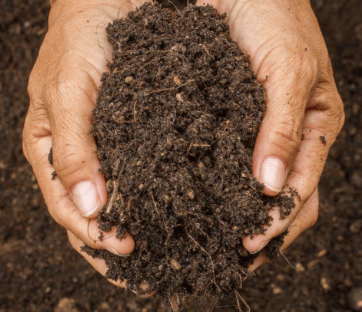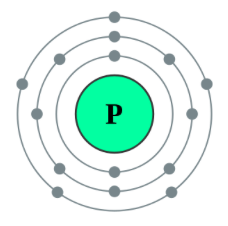
The Tennessee Valley Authority (TVA) has been responsible for the cleanup of the U.S Tennessee Kingston plant spill and eight (8) years on, the team are doing great. In the initail planning stage the team grouped engireers together to develop an innovative method of storing the fly ash.
Read More
 Australia will be one step closer to achieving its environmenal sustrainability targets if we can effectively manage new industries using by-products as resources from old industries. It is in this space that an Australian fly ash industry may emerge, bringing with it innovative leaders and entrepreneurs to incorporate fly ash as an integral part of their business.
Australia will be one step closer to achieving its environmenal sustrainability targets if we can effectively manage new industries using by-products as resources from old industries. It is in this space that an Australian fly ash industry may emerge, bringing with it innovative leaders and entrepreneurs to incorporate fly ash as an integral part of their business.
Read More
 The burning of coal to make electricity creates two major by-products, fly ash and CO2 from smoke stacks. The ADAA and its members are currently doing everything possible to increase the utilisation of fly ash in the hopes of lessening the impact of burning coal on the environment. Although the utilisation of fly ash has been progressive, CO2 has been continuously viewed as a nuisance. Until now…
The burning of coal to make electricity creates two major by-products, fly ash and CO2 from smoke stacks. The ADAA and its members are currently doing everything possible to increase the utilisation of fly ash in the hopes of lessening the impact of burning coal on the environment. Although the utilisation of fly ash has been progressive, CO2 has been continuously viewed as a nuisance. Until now…
Read More
US based company, Southern Research is using $1 million in federal funding to develop and test a method to extract valuable rare earth elements (REEs) from coal fly ash, the minuscule waste particles captured by anti-pollution devices in coal-fired power plants. REEs are a series of chemical elements found in the Earth’s crust that are widely used because of their special properties. Increasing interest and research is being conducted into extract these elements from coal combustion products (Coal ash).
Read More
There has long been a considerable demand for coal ash products in the UK construction and engineering sectors. The UKQAA (UK Quality Ash Association) recently produced its Ash Availability Report, which showed that since the turn of the century, the construction industry has typically consumed half of what’s produced annually. This rose to 70% in 2014 as the economy showed real signs of growth and the sustainability agenda became more important to specifiers.
which showed that since the turn of the century, the construction industry has typically consumed half of what’s produced annually. This rose to 70% in 2014 as the economy showed real signs of growth and the sustainability agenda became more important to specifiers.
Read More
 “Phosphorus can be extracted in viable quantities from fly ash. Sufficient phosphorus could be recovered from the country’s incinerators to meet 30 percent of the Swedish annual demand for mineral fertilisers, say the researchers.”
“Phosphorus can be extracted in viable quantities from fly ash. Sufficient phosphorus could be recovered from the country’s incinerators to meet 30 percent of the Swedish annual demand for mineral fertilisers, say the researchers.”
Read More
 We want your feedback, thoughts and ideas about Coal Ash Matters and how we can improve it for you in the future to further promote the use of coal combustion products in Australia. Results from this short five minute survey will be published in a coming edition of Coal Ash Matters.
We want your feedback, thoughts and ideas about Coal Ash Matters and how we can improve it for you in the future to further promote the use of coal combustion products in Australia. Results from this short five minute survey will be published in a coming edition of Coal Ash Matters.
Read More
 In 2015, the CRC for Low Carbon Living continues to forge ahead with its innovative research on geopolymer concrete as one of the most promising high volume applications of fly ash. Another project submitted to the CRC-LCL in 2014 aimed to gather field data from geopolymer real-life constructions to develop greater confidence in geopolymer use. Using the field and laboratory data, a comprehensive Handbook for geopolymer specification will be developed and published through Standards Australia.
In 2015, the CRC for Low Carbon Living continues to forge ahead with its innovative research on geopolymer concrete as one of the most promising high volume applications of fly ash. Another project submitted to the CRC-LCL in 2014 aimed to gather field data from geopolymer real-life constructions to develop greater confidence in geopolymer use. Using the field and laboratory data, a comprehensive Handbook for geopolymer specification will be developed and published through Standards Australia.
Read More
 The Cooperative Research Centre for Low Carbon Living approval for a 3 year project, RP1020: Reducing Barriers for Commercial Adaptation of Construction Materials with Low-Embodied-Carbon, will total $3.1 million and is well on track with progress to be reviewed in April 2015.
The Cooperative Research Centre for Low Carbon Living approval for a 3 year project, RP1020: Reducing Barriers for Commercial Adaptation of Construction Materials with Low-Embodied-Carbon, will total $3.1 million and is well on track with progress to be reviewed in April 2015.
Read More


 Australia will be one step closer to achieving its environmenal sustrainability targets if we can effectively manage new industries using by-products as resources from old industries. It is in this space that an Australian fly ash industry may emerge, bringing with it innovative leaders and entrepreneurs to incorporate fly ash as an integral part of their business.
Australia will be one step closer to achieving its environmenal sustrainability targets if we can effectively manage new industries using by-products as resources from old industries. It is in this space that an Australian fly ash industry may emerge, bringing with it innovative leaders and entrepreneurs to incorporate fly ash as an integral part of their business.  The burning of coal to make electricity creates two major by-products, fly ash and CO
The burning of coal to make electricity creates two major by-products, fly ash and CO which showed that since the turn of the century, the construction industry has typically consumed half of what’s produced annually. This rose to 70% in 2014 as the economy showed real signs of growth and the sustainability agenda became more important to specifiers.
which showed that since the turn of the century, the construction industry has typically consumed half of what’s produced annually. This rose to 70% in 2014 as the economy showed real signs of growth and the sustainability agenda became more important to specifiers. “Phosphorus can be extracted in viable quantities from fly ash. Sufficient phosphorus could be recovered from the country’s incinerators to meet 30 percent of the Swedish annual demand for mineral fertilisers, say the researchers.”
“Phosphorus can be extracted in viable quantities from fly ash. Sufficient phosphorus could be recovered from the country’s incinerators to meet 30 percent of the Swedish annual demand for mineral fertilisers, say the researchers.”
 In 2015, the CRC for Low Carbon Living continues to forge ahead with its innovative research on geopolymer concrete as one of the most promising high volume applications of fly ash. Another project submitted to the CRC-LCL in 2014 aimed to gather field data from geopolymer real-life constructions to develop greater confidence in geopolymer use. Using the field and laboratory data, a comprehensive Handbook for geopolymer specification will be developed and published through Standards Australia.
In 2015, the CRC for Low Carbon Living continues to forge ahead with its innovative research on geopolymer concrete as one of the most promising high volume applications of fly ash. Another project submitted to the CRC-LCL in 2014 aimed to gather field data from geopolymer real-life constructions to develop greater confidence in geopolymer use. Using the field and laboratory data, a comprehensive Handbook for geopolymer specification will be developed and published through Standards Australia. 